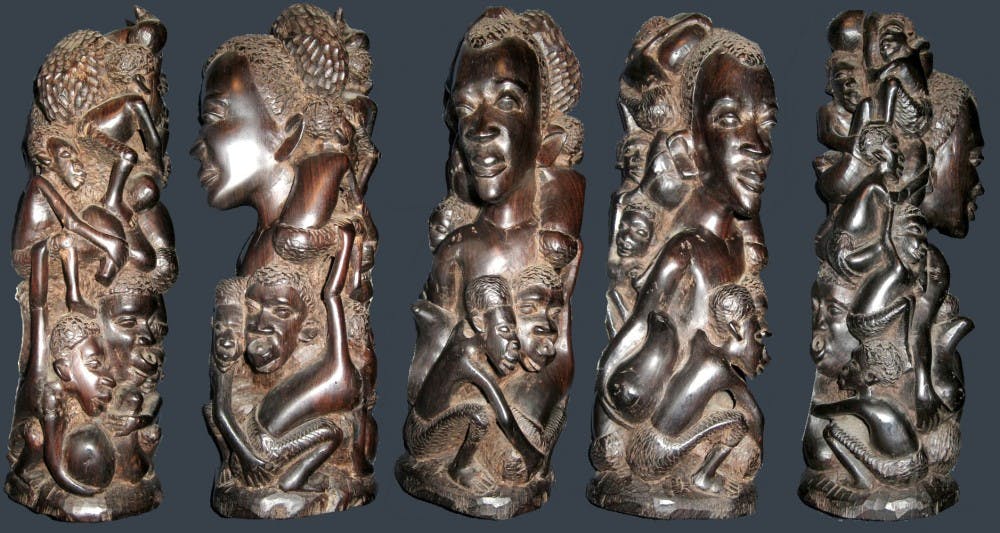The Brooklyn Museum made headlines last month after announcing the appointment of two new curators. Kristen Windmuller-Luna, a curator and historian of African arts and architecture, was appointed the Sills Family Consulting Curator of African Art and Drew Sawyer was appointed the Phillip Leonian and Edith Rosenbaum Leonian Curator of Photography. Some questioned why both curators were white, particularly Kristen Windmuller-Luna, who will work with the African Art collection. Critics wondered why the museum couldn’t find a qualified black curator for the position. The hire is also a sign of the increasing gentrification in the borough. The controversy surrounding the hire at the Brooklyn Museum highlights not only a lack of diversity in the arts and museum industry, but also higher education programs that prepare individuals for the job.
A 2015 study by The Andrew W. Mellon Foundation found that 72 percent of the Association of Art Museum Directors are non-Hispanic whites while only 28 percent were from historically underrepresented minorities. The study concluded that while these demographics may not seem striking because they closely matched demographics of the American population, there is significant variation in demographic diversity across different types of museum employment. The report noted that, “non-Hispanic white staff continues to dominate the job categories most closely associated with the intellectual and educational mission of museums, including those of curators, conservators, educators, and leadership (from director and chief curator to head of education or conservation).”
Black people constitute a mere four percent across museum leadership roles including curator, conservator, and educator, while non-Hispanic whites make up 84 percent of those roles. When compared to any other job category, minority groups were overrepresented in security and facilities job categories. From this evidence, it is clear that the hire of both Windmuller-Luna and Sawyer does not fall outside of the norm for how usually acquire talent.
Beyond analyzing the lack of diversity within the arts, it is equally important to analyze the lack of diversity of art history programs in higher education — these supply the curators for the museum in the first place.
The number of black people getting doctorate degrees has increased but remains low when compared to their white counterparts. The percentage is even lower for art history Ph.D. programs. These low percentages in higher education will reflect in the workplace. Curatorial work in museums is but one of the many routes one can go with an advanced degree in that field, but if there are little to no black Ph.D. graduates, there will be little to no black curators in the candidate pool.
Another concern of critics focused on the fact that a white curator would be working on an exhibit on black culture. Some called the curators “cultural colonizers” and others called to #decolonizebrooklynmuseum. The criteria for curating ethnic exhibits should not rely on race, but continuing the trend of presenting black culture through a white lens only continues the process of whitewashing culture. Art institutions like the Brooklyn Museum choosing to task white curators with the responsibility of reimagining blackness denies a black curator the chance to do so.
Kristen Windmuller-Luna received her Ph.D. in African Art History from Princeton University, worked as an African Arts research specialist in Princeton's art museum, and is a lecturer at Columbia University. Her credentials and experience can’t be denied — but her position is just another example of a white curator having the power to curate black and brown stories. This only upholds systems in this country that benefits whiteness.
Currently, 3 of the 19 curators on the Brooklyn Museum’s curatorial staff are black. Rather than placing fault on the museum for their choice in picking a qualified candidate within the normal patterns of hiring, there should be a conversation on increasing diversity within the arts industry. Last year, the Walton Family Foundation and Ford Foundation announced that they are each committing $3 million over three years to support creative solutions to diversify curatorial and management staff at art museums across the United States. In the announcement, the foundations wrote that, “the funded initiatives will affect curatorial and programmatic decision-making in the museums, as well as managerial choices, and lead to long-term benefits for the participating museums and the field as a whole.” The announcement went on to note that, “the outcomes of the funded initiatives will be shared with the larger field, enabling other art institutions to learn from successful approaches.”
By investing in increases to diversity, organizations like these are taking a step in the right direction. The Brooklyn Museum is not a part of the Diversifying Art Museum Leadership Initiative, but there are 20 museums participating in the programs. Though a small start, the funding given by these foundations will allow these museums to take steps to diversify their workforce. They can test out creative ways to ensure that more people of color appear in candidate pools for high-level positions. If proven successful, these programs could serve as incentive for minorities to pursue careers in the art world, generating a long-term effect. Hopefully, the results of these programs will spread and increase diversity in the art world.
Zari Taylor is a Senior Opinion Columnist for The Cavalier Daily. She can be reached at opinion@cavalierdaily.com.







